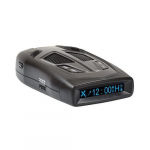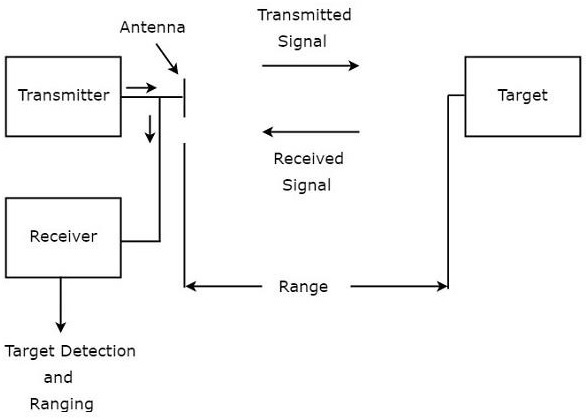- Show results for
- Share
How does Radar Detector Work?
Resource Description

For most vehicle owners to raise the speed is accidental. Nowadays technology gives us an opportunity to have a smooth and pretty quiet drive that can reach up to 80 mph and be felt as 40 mph. That is why there is a tool used to warn the drivers about the possible speed limit monitoring by the police and to give you the possibility to slow down. This equipment is called a Radar Detector.
Radar Detector is an electronic equipment that offers to identify radio waves or signals. It is a type of electromagnetic power that is generated from radar. The police often use radar devices to identify the vehicles that drive over the speed limit. This equipment helps to determine the radar device.
What is Radar and how does it work?

|
|
Whistler MFU440 Radar Detector with Built-In Dash Cam |
| View Details |
Radar or as it is also called Radio Detection and Ranging provides radio signals that can be sent out into the air where the signals provide movements at the speed of lightning. The spreading of these signals and the amount of returned power help radar to identify objects, their position and destination.
Common radar systems have such factors that allow them to be used as an object detector:
- Frequency source makes a low energy wave at the appropriate functional frequency of the radar.
- A radar transmitter that increases the energy level of the signal from the frequency source and develops its frequency as it is needed, so the consequent power signal has the necessary energy to coat the needed level of distance for the radar application.
- A radar antenna provides a transmission of the radar systems waves into the air. It can transmit directionally, to a certain object or to the opposite way where the radar power is turned out over the 360°.
- A radar catcher detects the pulse that turned back or signal that bounced off an object and changes such signal into a power signal that can be converted and tested.
- A radar signal pulls out and converts the characteristics of the radar catcher signal to determine an object, their speed and distance. Power supplies produce the energy to each radar’s factors.

How does Radar System Identify Speed?
When the vehicle moves toward the radar equipment, the returned radio waves frequency raises. This way the radar equipment can change the frequency and identify the speed of the vehicle.
The Radar system works by the principle of Doppler effect. While the object’s distance is determined by the amount of time that it uses to identify the sent back pulse, the object’s speed can be identified by the pulse conversion between sent and received reflection. This produces the speed from the direction where the radar is indicating so-called radial speed. The determined speed is accurate when the vehicle moves straight towards the radar detector.

How does Radar Detector Work?
Radar Detector is used to determine the radar device by the radio waves it produces. The Radar device identifies the distance and the speed of the vehicle.
The device transmits radio waves, which run at a lightning speed and returns to the device when these waves identify the object in the direction. When the radar device identifies the speed of the moved vehicle, the frequency of the returned radio waves converts due to the vehicle on the move. When your vehicle moves towards the radar device, the frequency increases. The device changes the returned waves in frequency to determine the speed of the vehicle’s move.
Radar detector works as a radio receiver to grab the frequency that is used by the radar device, because radio waves are expanded as they spread out of the radar device, and the radar detector can identify them and to warn the vehicle driver by the alarm or a light on the display to lower the speed.

Difference between X-band and K-band radars
The frequency of the radar signal on the electromagnetic range is divided in bands: X-band and K-band. Each band provides a variety of frequencies when the radar transmitters send power out through the range.
X-band radar produces a low frequency, but high out-turn that helps to identify the object from a distance of 2-4 miles. X-band signals are produced not only by the police radar, but the objects such as garage door openers or microwave towers.
K-band radar is often used by the police, because it has a small wavelength. Such radars can determine the object accurately from 0,25 to 2 miles out, which makes it more difficult for the radar detector to point the signal in advance due to their low wave frequency.
Radar detectors that you set in your vehicle can cause false warnings as the bands described above can be installed in other devices such as security alarms, automatic doors. Moreover, not all police are equipped with the radar devices in their police cars. They often use radar guns that are off when there is no traffic. That is why sometimes it will be difficult to identify the signal of the upcoming radar.
What Is FDSR?
The FDSR technology is referred to as the most advanced detection system developed by Whistler to lessen false alerts. FDSR relates to the Field Disturbance Sensor Rejection and when it is turned on it is applied to detect all radars-based collision avoidance and blindspot detection systems that function within K band radar.
The FDSR system provides a short alarm that keeps you informed and aware. Instead of providing a signal completely, the signal strength will allow you to determine the proximity to the source without annoying continuing alarm.



